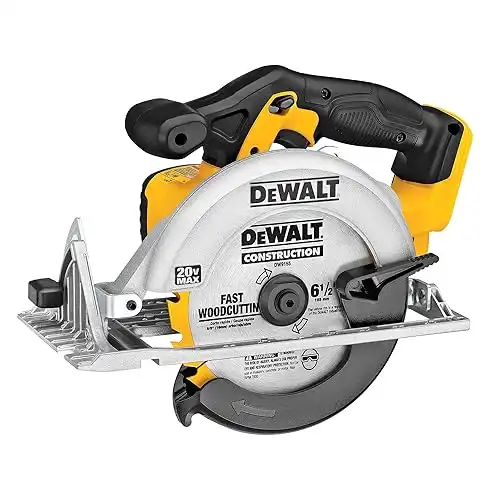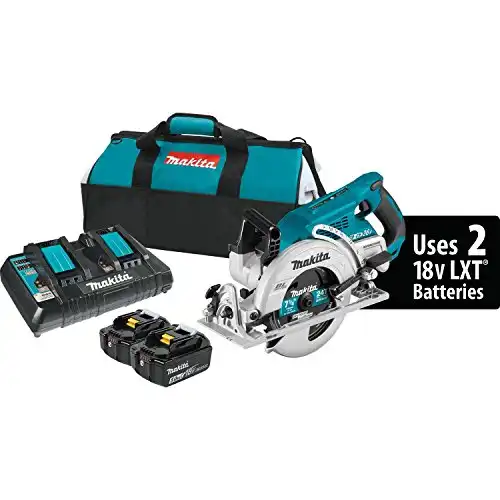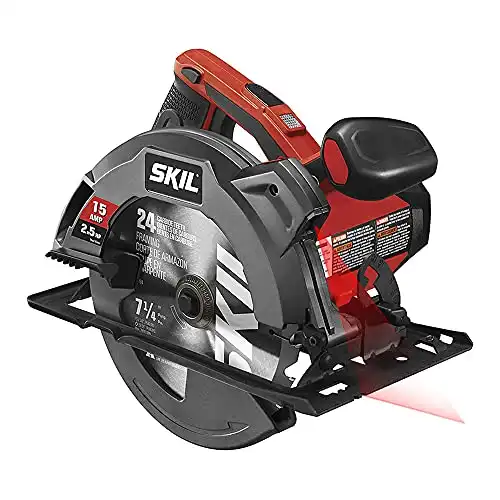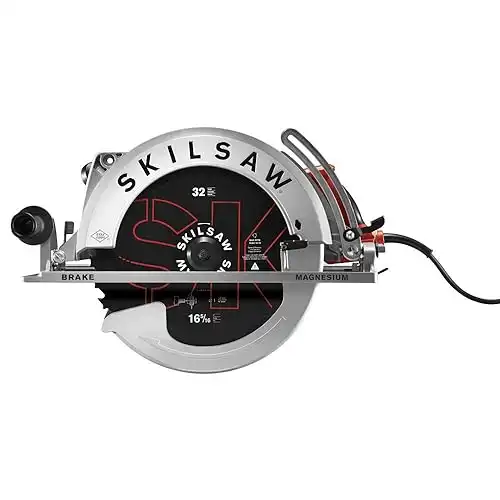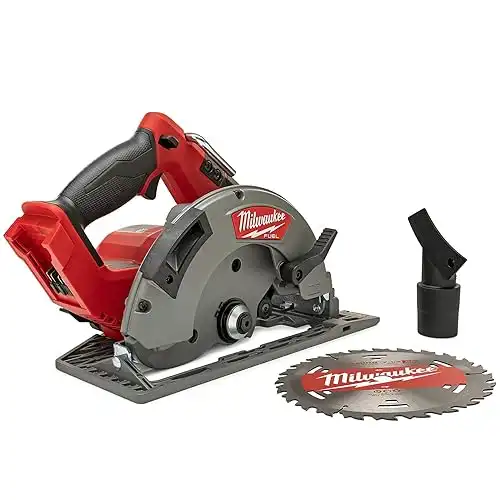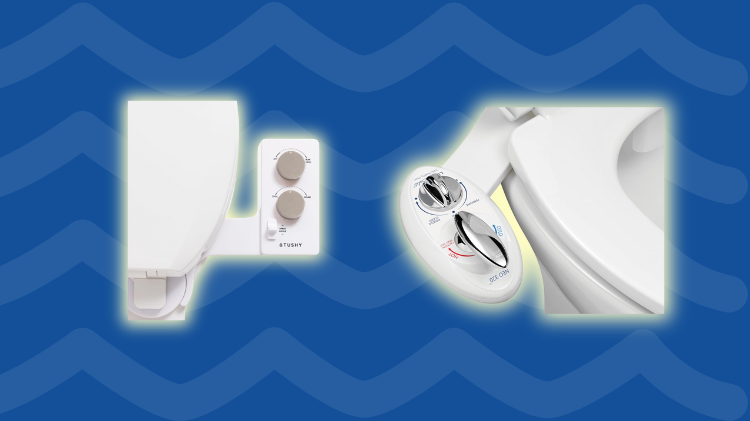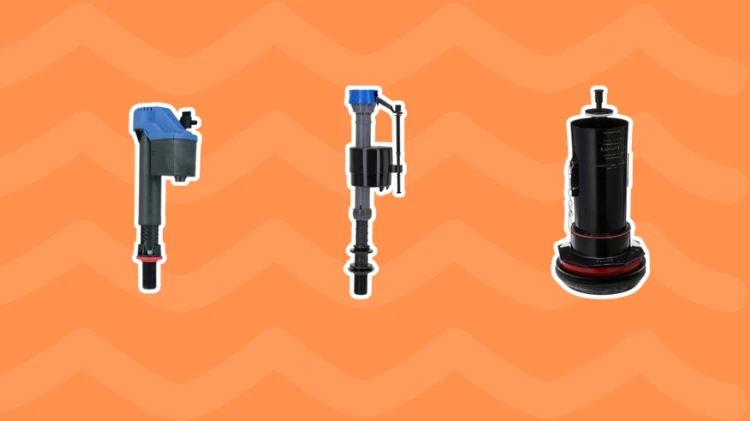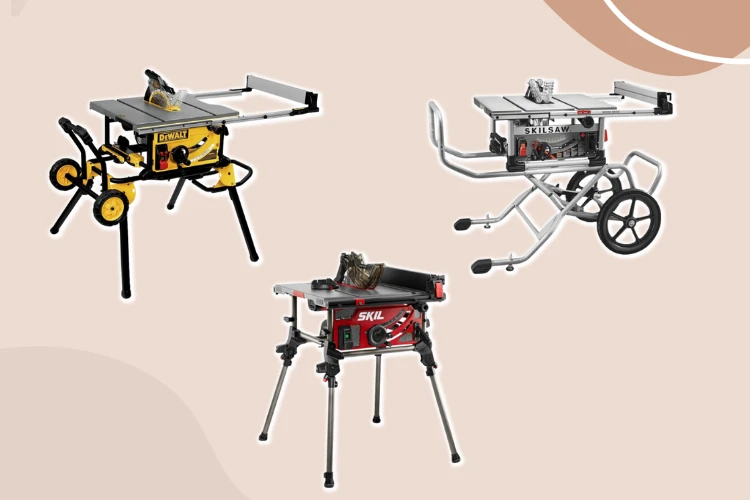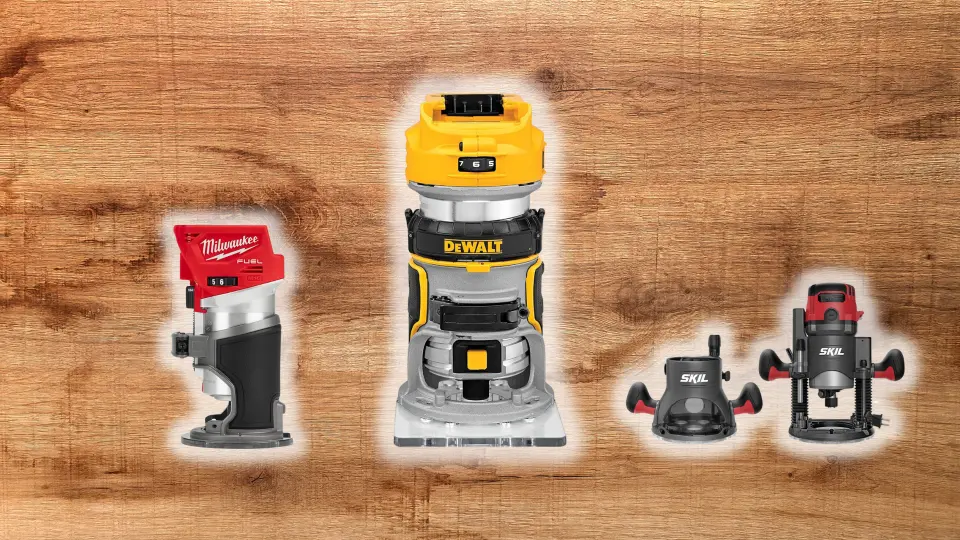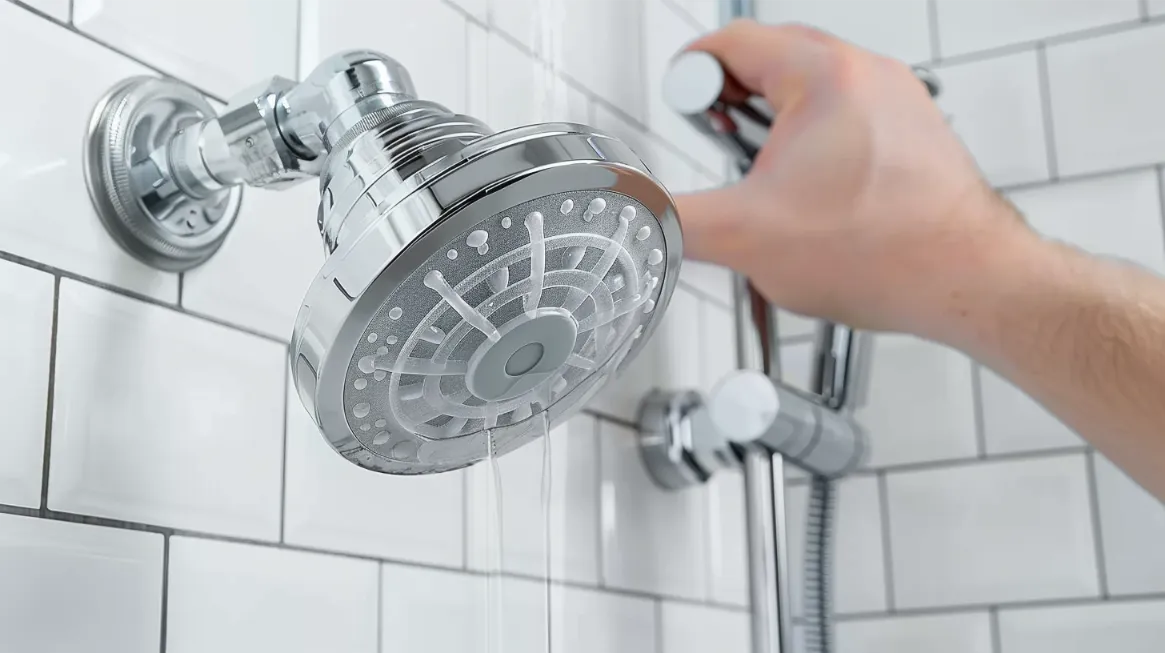You’re searching for high-quality circular saws, right?
The DEWALT 20V MAX stands out for its powerful motor and user-friendly design. The Makita XSR01PT offers power similar to corded saws, while SKIL’s saws are budget-friendly without compromising functionality. If you prefer cordless, you can’t beat the Milwaukee 7-1/4 in. circular saw.
Consider blade diameter and cutting depth according to your needs. Also, don’t overlook safety features!
Now, keep diving deeper. There’s a lot more to unpack about buying your perfect circular saw.
Our Top Picks
- The DEWALT 20V MAX Circular Saw offers a high-performance motor and user-friendly design with a long-lasting battery.
- Makita XSR01PT provides powerful performance rivaling corded saws, with an ergonomic grip for better control.
- SKIL offers two robust circular saws: the 15 Amp 7-1/4 Inch model for value and power and the 16-5/16 Inch model for high efficiency.
- Milwaukee 7-1/4 in. Circular Saw offers impressive power output and an intuitive design for comfortable, prolonged use.
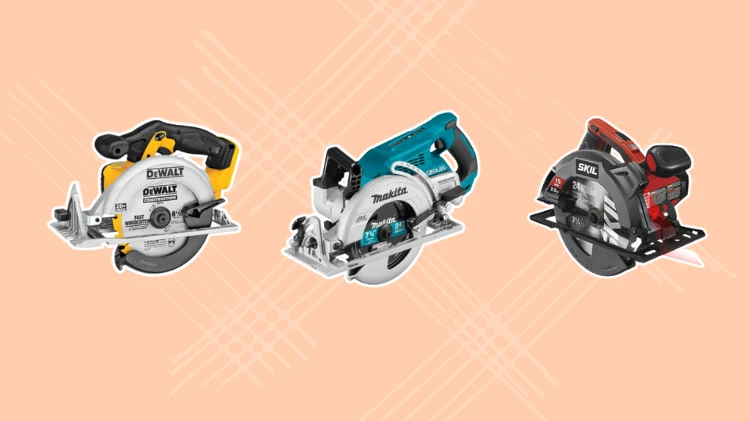
#1 Best Overall
DEWALT 20V MAX Circular Saw
If you’re a professional seeking power, durability, and convenience in your tools, the DEWALT 20V MAX circular saw is unquestionably the best overall choice, thanks to its high-performance motor and user-friendly design. This saw slices through materials with astonishing ease, outperforming many corded counterparts minus the hassle of a cord.
Plus, when equipped with 4Ah or 5Ah batteries, it delivers sustained power for extensive use, making it a top pick for your toolbox.
Moreover, its lightweight design reduces fatigue, making lengthy projects less challenging. You’ll appreciate features like the quick-stop blade brake and directional material expulsion, which enhance safety and convenience.
With the DEWALT 20V MAX circular saw you’ll have a reliable tool that offers a comfortable grip and angle-cutting flexibility, streamlining your work and bringing efficiency to your projects.
Pros:
- The high-performance motor that cuts through materials with ease
- User-friendly design with safety features and angle-cutting flexibility
- Long-lasting battery life, mainly when used with 4Ah or 5Ah batteries
Cons:
- Higher capacity batteries needed for optimal performance, which may be an additional cost
#2 Best Rear-Handle
Makita XSR01PT Circular Saw
Best For: Professionals and severe DIY enthusiasts looking for a powerful, cordless circular saw that can handle heavy-duty tasks and offers long-lasting battery life.
For professionals looking for a cordless saw that matches the power of corded ones, the Makita XSR01PT Circular Saw stands out, offering unparalleled performance and endurance. This cordless saw cuts through different materials smoothly and effortlessly, almost making you forget it’s battery-operated. Its 5-ah batteries provide long-lasting power, ensuring you can work throughout the day without interruption.
The Makita XSR01PT’s design features, like the direct-drive system and ergonomic grip, make it comfortable and easy to control. However, it’s worth noting that it lacks an LED light, a minor feature you might miss if you’re used to other Makita tools. Nonetheless, this minor oversight doesn’t detract from its overall performance.
Adapting to the cordlessness may take some time. Still, once you do, the Makita XSR01PT becomes an essential tool in your kit, proving its worth for occasional DIY projects and rigorous professional use.
Pros:
- Powerful performance rivaling corded circular saws.
- Long-lasting 5-ah batteries provide all-day endurance.
- Comfortable ergonomic grip and direct-drive system enhance control.
Cons:
- Lacks an LED light, a common feature in other Makita tools.
#3 Budget Pick
SKIL 15 Amp 7-1/4 Inch Circular Saw
Best For: DIY enthusiasts and professionals looking for a reliable, feature-rich, and budget-friendly circular saw for various projects.
Whether you’re a DIY enthusiast or a professional, the SKIL 15 Amp 7-1/4 Inch Circular Saw, boasting a robust motor and a user-friendly design, offers exceptional value for those on a budget. This saw is a workhorse, capable of handling a wide range of projects. Its laser guide and dust blower are impressive features that enhance accuracy and visibility.
Despite its weight, the saw’s ergonomic design makes it easy to handle, even during long sessions. However, the depth gauge readability and laser visibility in bright sunlight may need improvement. Additionally, the two-handed safety switch may not suit everyone’s preference.
While the blade installation process could be smoother and the included blade quality higher, these drawbacks don’t overshadow the saw’s overall performance and value. This budget-friendly pick is worth considering for its power, functionality, and user-friendly design.
Pros:
- Robust motor and sturdy build, suitable for heavy-duty tasks.
- User-friendly design with convenient features such as a laser guide and dust blower.
- It is excellent value for money, considering its power, functionality, and additional convenience features, such as the carrying bag.
Cons:
- The weight of the saw might be too heavy for some users.
#4 Best Corded
SKIL 16-5/16 In. Skilsaw Circular Saw
Best For: Professionals and serious hobbyists who demand high efficiency and power from their corded woodworking tools.
Boasting impressive power and efficiency, the SKIL 16-5/16 In. Skilsaw Circular Saw is the top pick for professionals and serious hobbyists who demand top performance from their corded tools. Whether you’re slicing through thick oak or dense concrete, this saw’s performance won’t disappoint you. Its efficiency, often outperforming rivals, can save time and effort.
Built from durable magnesium alloy, the saw is sturdy without being excessively heavy. The dual handle placement and included stand to makes using and storing the saw a breeze. Unfortunately, the blade could be more durable, and the blade guard can be stiff, particularly during plunge cuts.
However, considering its power, build quality, and cost savings over similar models, the SKIL 16-5/16 In. Skilsaw is an excellent investment. It’s a powerhouse of a tool that provides value for money despite a few minor flaws.
Pros:
- Powerful and efficient, capable of cutting through thick and dense materials.
- Constructed with durable magnesium alloy, providing robustness without excessive weight.
- It has a dual-handle placement and a stand for ease of use and storage.
Cons:
- The blade may need to be replaced sooner than expected due to wear.
#5 Best Cordless
Milwaukee 7-1/4 in. Circular Saw
Best For: Professional users seeking a powerful and flexible cordless circular saw for tasks ranging from deck building to intricate remodeling.
If you’re a professional looking for a robust and flexible tool, the Milwaukee 7-1/4 in. Circular Saw stands out as the best cordless option. Thanks to its M18 battery system, it delivers impressive power and flexibility. With a power output that rivals corded models, it easily handles tasks from deck building to intricate remodeling. Despite its lightweight, its robust construction makes it durable and reliable.
This saw’s intuitive and balanced design makes it comfortable for prolonged use. The ambidextrous safety button and onboard light are thoughtful features that cater to a diverse user base. Its compatibility with various M18 batteries ensures you’re never left wanting for power. While it’s a bit heavy with larger batteries, its performance and adaptability make it a worthy investment.
Pros:
- Impressive power output that rivals corded models, making it suitable for various tasks.
- Intuitive and balanced design for comfortable prolonged use, with thoughtful features like an ambidextrous safety button and onboard light.
- Compatible with various M18 batteries, ensuring users are never left wanting for power.
Cons:
- The saw is heavy and has larger batteries, impacting maneuverability and comfort over extended periods.
Circular Saw Buying Guide: Key Features to Look For
When choosing a circular saw, there are several important factors to consider:
Blade Size
The blade size determines the maximum cutting depth and capacity of the saw. Standard blade sizes for handheld circular saws are:
- 6-1/2 inches: Suitable for cutting materials up to around 2 inches thick at 90 degrees.
- 7-1/4 inches: The most popular size, capable of cutting 2x dimensional lumber at 90 degrees in a single pass.
- 8-1/4 inches: Provides greater cutting depth, but the saws are heavier and less maneuverable.
Larger blades like 10-inch or 12-inch are used on heavy-duty saws or miter saws rather than handheld circular saws.
Power Source
Circular saws are available in both corded and cordless models:
- Corded saws plug into an AC power outlet, providing constant high power without runtime limitations. Extension cords may be needed for job site use.
- Cordless saws run on rechargeable batteries, offering portability at the cost of lower power and limited runtime between charges.
Cutting Depth
An important specification is the maximum cutting depth at 90 degrees (straight cut) and 45 degrees (bevel cut). It determines the maximum material thickness the saw can handle in one pass. Adjust the blade depth to clear the material and prevent unnecessary blade exposure.
Safety Features
Look for features that enhance safety, like electric brakes to quickly stop the blade after releasing the trigger, guards that don’t snag on the material, and manageable blade visibility. Anti-snag ball-bearing blade guards are a great safety feature.
Blade Type
Different blade types are optimized for different cutting applications:
- Combination blades with 40-50 teeth are versatile for general-purpose cutting.
- Fewer teeth (18-30) on demolition/framing blades for faster, rougher cuts.
- More teeth (60-80) on finishing blades for smoother, finer crosscuts.
Ergonomics
Consider the saw’s weight, grip design, and balance. Top handles provide more control, while barrel grips are easier on the wrists for longer cuts. Built-in LED lights can improve visibility.
By considering blade size, power source, depth capacity, safety features, blade type, and ergonomics, you can select the best circular saw suited for your cutting needs and working conditions.
Final Verdict
After considering all these factors, you’re now ready to make an informed decision about which circular saw is the best fit for your needs. Looking at the blade position, cutting capacity, and design variations among circular saws, it’s clear that these tools are designed with versatility and functionality in mind.
Typically, circular saw blades are 7.25 inches in diameter. This size balances cutting capacity and maneuverability; it’s large enough to tackle most woodworking projects but not so large as to be unwieldy. The cutting capacity of these saws, around 2.25 inches deep, provides a significant range for your projects.
The blade position is usually on the right side of the motor, providing better visibility during cutting. This layout is a standard design variation across most models, ensuring efficient woodcutting. However, left-handed users might prefer a saw with a blade on the left for improved visibility and control.
The limited design variation among tested circular saws indicates that most models offer similar features for effective wood cutting. But you should still check out different brands and models, as some may provide additional features or better ergonomics that suit your needs.
So, there you have it! We’ve explored the world of circular saws, from the top picks to critical features to look for.
Whether you need a versatile DEWALT, a rear-handled Makita, or a budget-friendly SKIL, you have a circular saw.
Remember, your choice should match your specific needs and budget. Now, make that informed decision and watch your woodworking or construction project reach new heights of precision and efficiency.
Happy sawing!
FAQ
What is the difference between sidewinder and worm drive circular saws?
Sidewinder (inline) circular saws have the motor positioned directly behind the blade. In contrast, worm drive saws have the motor placed at a 90-degree angle and use gears to transfer power to the blade. Worm drive saws are heavier but provide more torque, making them better for heavy-duty applications like framing. Sidewinders are lighter and more compact.
What blade should I use for cutting plywood?
Use a circular saw blade with a high tooth count, typically 60 teeth or more, for clean cuts in plywood and veneered materials. The higher tooth count leaves a smoother cut with fewer chips out than fewer teeth.
How do I choose the right circular saw blade?
Consider the material you’ll be cutting, the type of cut (rip, crosscut, etc.), and whether you need a rough or fine finish cut. Blades with fewer teeth (18-30) are for faster rough cuts, while blades with more teeth (60+) leave a smoother finish. Combination blades with around 40 teeth can handle various cuts.
Can I use a circular saw to cut metal or masonry?
Standard circular saw blades are designed for cutting wood, wood composites, and plastic. It would be best to have specialty abrasive or diamond-tipped blades rated for cutting metal, masonry, tile, or concrete. Using a wood blade on those materials can damage the blade and be unsafe.

